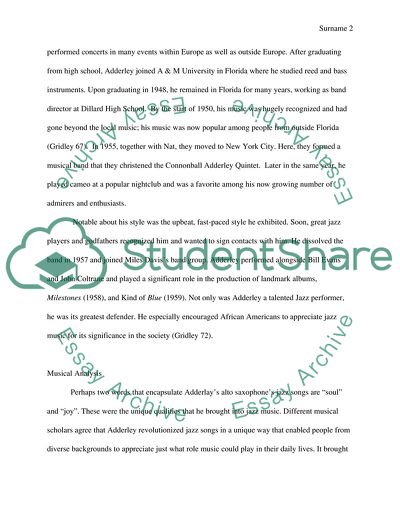Cite this document
(Julian Adderley Jazz Musician Essay Example | Topics and Well Written Essays - 1250 words, n.d.)
Julian Adderley Jazz Musician Essay Example | Topics and Well Written Essays - 1250 words. https://studentshare.org/music/1866441-juilian-adderlay
Julian Adderley Jazz Musician Essay Example | Topics and Well Written Essays - 1250 words. https://studentshare.org/music/1866441-juilian-adderlay
(Julian Adderley Jazz Musician Essay Example | Topics and Well Written Essays - 1250 Words)
Julian Adderley Jazz Musician Essay Example | Topics and Well Written Essays - 1250 Words. https://studentshare.org/music/1866441-juilian-adderlay.
Julian Adderley Jazz Musician Essay Example | Topics and Well Written Essays - 1250 Words. https://studentshare.org/music/1866441-juilian-adderlay.
“Julian Adderley Jazz Musician Essay Example | Topics and Well Written Essays - 1250 Words”. https://studentshare.org/music/1866441-juilian-adderlay.


